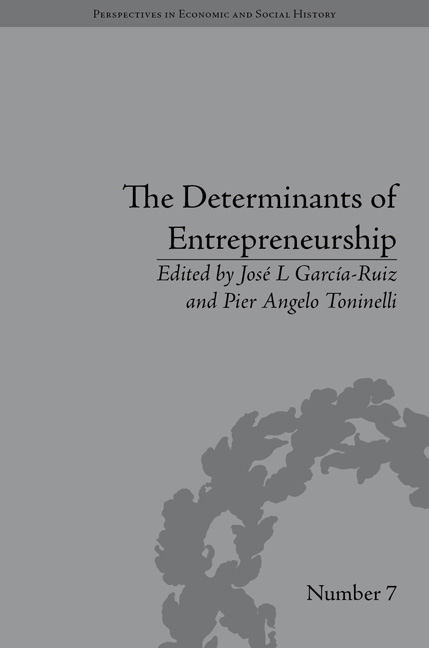Book contents
- Frontmatter
- CONTENTS
- List of Figures and Tables
- List of Contributors
- Introduction
- Part I Entrepreneurial Typologies
- 1 Determinants and Typologies of Entrepreneurship in the History of Industrial Italy
- 2 Entrepreneurial Typologies in a Young Nation State: Evidence from the Founding Charters of Greek Société Anonymes, 1830–1909
- Part II The Business Leaders
- Part III Culture or Institutions?
- Notes
- Works Cited
- Index
1 - Determinants and Typologies of Entrepreneurship in the History of Industrial Italy
from Part I - Entrepreneurial Typologies
- Frontmatter
- CONTENTS
- List of Figures and Tables
- List of Contributors
- Introduction
- Part I Entrepreneurial Typologies
- 1 Determinants and Typologies of Entrepreneurship in the History of Industrial Italy
- 2 Entrepreneurial Typologies in a Young Nation State: Evidence from the Founding Charters of Greek Société Anonymes, 1830–1909
- Part II The Business Leaders
- Part III Culture or Institutions?
- Notes
- Works Cited
- Index
Summary
Introduction: Entrepreneurship and its Environment
Entrepreneurship is a difficult subject to grasp. Notwithstanding its much acknowledged centrality for the wealth and the competitiveness of a nation, it is an elusive phenomenon, a concept very difficult to define clearly, a concept so protean that it is impossible to categorize in a mathematically formalized discourse.
Entrepreneurship appears in different sizes: it can be found in large corporations as well as in the small workshops of artisans. It can present itself under various forms. There is, of course, the Schumpeterian hero capable of constructing an empire but it can also be found in a manager in an entrepreneurial position who has the capacity not only to maintain a strong grip on the organization but also to make it even bigger. It is possible for an entrepreneur to be self-employed or even someone with a couple employees who is capable of being highly reactive in responding to customized demands and fitting his actions into a limited niche. Innovation is a good litmus test to verify the degree of entrepreneurship in an economic national system, but it is not enough to explain everything. Entrepreneurship can be a long, day-by-day accumulation or it might just present itself in a dramatic leap ahead. But, again, not all the people we tend to identify as entrepreneurs are actually exceptional innovators.
- Type
- Chapter
- Information
- The Determinants of EntrepreneurshipLeadership, Culture, Institutions, pp. 9 - 32Publisher: Pickering & ChattoFirst published in: 2014



